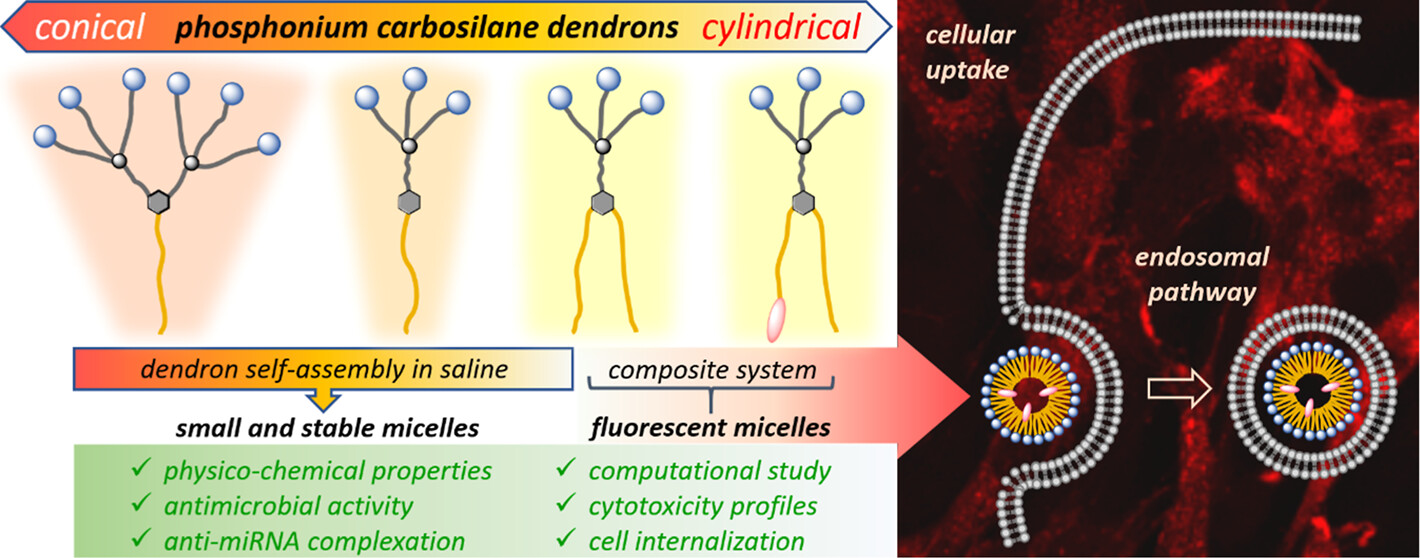Amphiphilic materials containing a hydrophilic and hydrophobic domain within their molecule tend to self-assemble in aqueous solutions into complex supramolecular systems—micelles or bilayers of diverse geometries. This phenomenon is largely exploited by all living organisms, namely for forming cell membranes and derived objects responsible for transporting substances from and to the cells—exosomes, and endosomes. Their artificial alternatives of various compositions can be applied in nanomedicine as drug delivery systems or for the stabilization and transport of nucleic acids.
Our team synthesized a series of amphiphilic dendrons with a branched hydrophilic part carrying many positively charged phosphonium groups and a hydrophobic part consisting of one or two aliphatic chains. We subsequently investigated the influence of the molecule’s shape (changing hydrophilic-to-hydrophobic ratio) on the properties of emergent nanoparticles. We have found that both self-assembly characteristics (critical micellar concentration and particle size) and biological effects of amphiphilic dendrons correlate with their structural parameters. In aqueous solutions, even at very low concentrations, all studied dendrons form remarkably small and stable micelles, able to pass the cell membrane and showing high cytotoxicity, but also a high antimicrobial activity against multiresistant bacterial strains. Dendrons also form complexes with RNA, potentially suitable for therapeutic use. Aiming to observe the particles’ fate within cell cultures and tissues, we prepared a dendron bearing a fluorescent tag in the molecule. Upon mixing with its unlabeled structural analog, the labeled dendron forms composite supramolecular assemblies, directly observable in cells by fluorescent microscopy, thus verifying their successful transport through the cell membrane.
This study resulted from a multidisciplinary collaboration between the Research Group of Bioorganic Chemistry and Biomaterials at the Institute of Chemical Process Fundamentals, J. E. Purkyně University in Ústí nad Labem (Department of Physics and Centre for Nanomaterials and Biotechnology) and Biomedical Research Centre at University Hospital Hradec Králové. The results contribute to a better understanding of the relationship between amphiphilic dendritic materials’ structure and self-assembly behavior and show their broad application potential in nanomedicine.
- Edr A., Wrobel D., Krupková A., Červenková Šťastná L., Apartsin E., Hympánová M., Marek J., Malý J., Malý M., Strašák T.*: Adaptive Synthesis, Supramolecular Behavior, and Biological Properties of Amphiphilic Carbosilane-Phosphonium Dendrons with Tunable Structure. Biomacromolecules 2024, 25(12), 7799–7813. doi.org/10.1021/acs.biomac.4c01092
